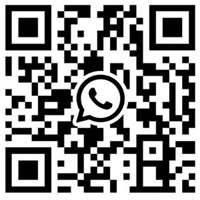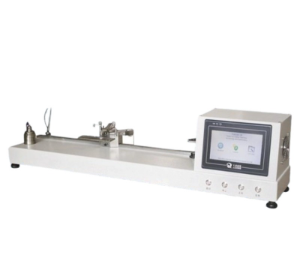Application ScopeThe yarn twist tester is an instrument used to measure the twist of yarns and their
WhatsApp : +86 13816217984
Email : info@qinsun-lab.com

Application Scope
The yarn twist tester is an instrument used to measure the twist of yarns and their related technical indicators.
Normes applicables
1. GB/T 2543.1: Textiles - Determination of yarn twist - Part 1: Direct counting method.
2. GB/T 2543.2: Textiles - Determination of yarn twist - Part 2: Untwist - retwist method.
3. ISO 2061: Textiles - Determination of yarn twist - Direct counting method.
4. ISO/DIS 17202: Textiles - Determination of yarn twist (Note: This standard may be updated over time. Please confirm the latest version before use).
5. BS 2085: Relevant clauses regarding yarn twist measurement in British standards.
6. ASTM D 1422 and ASTM D 1423: Standards regarding yarn twist measurement issued by the American Society for Testing and Materials (ASTM).
Paramètres principaux
1. Test range: Applicable to the twist test of various yarns and ply yarns such as cotton, wool, silk, chemical fibers, etc.
2. Twist range: Usually, it can measure a relatively large twist range, such as 1 - 99999.99 twists, to meet the test requirements of different yarns.
3. Yarn tension: There is a set of weights for adjusting yarn tension. The weight configuration may include multiple 0.5 cN, 1 cN, 2 cN, 5 cN, 10 cN, 20 cN, etc. The specific configuration may vary depending on the equipment. The magnitude of the tension can be adjusted according to the type of yarn.
4. Rotational speed: The rotational speed of the chuck or rotating holder can usually be continuously adjusted within a certain range, such as 100 r/min - 2000 r/min or 100 r/min - 1900 r/min, etc., to meet the needs of different test speeds and yarn characteristics.
5. Test length: The test length can usually be set arbitrarily within a certain range, such as 10 - 500 mm, etc., to meet the requirements of different test standards and yarn lengths.
6. Test methods: It may include multiple test methods such as direct counting method, single untwist - retwist method, double untwist - retwist method, triple untwist - retwist method, etc., to meet the requirements of different yarns and test standards.
7. Data output method: Usually has display output and print output functions. The display output can show parameters such as the number of tests, single twist value, twist factor, etc. through a touch screen or LCD display; the print output can realize Chinese or English printed reports by connecting a printer.
8. Power supply: Usually powered by AC220V 50HZ, but the specific voltage and frequency may vary depending on the equipment.
Disclaimer: Le contenu ci-dessus est destiné à des fins de référence et de communication uniquement entre les initiés de l'industrie, et ne garantit pas son exactitude ou son exhaustivité. Conformément aux lois et règlements pertinents et aux règlements de ce site Web, les unités ou personnes qui achètent des articles connexes doivent obtenir des qualifications et des conditions de qualification valides.
Téléphone de l'entreprise
+86-21-6420 0566
Heures de travail
Du lundi au vendredi
Téléphone portable:
13816217984
Courriel :
info@qinsun-lab.com
